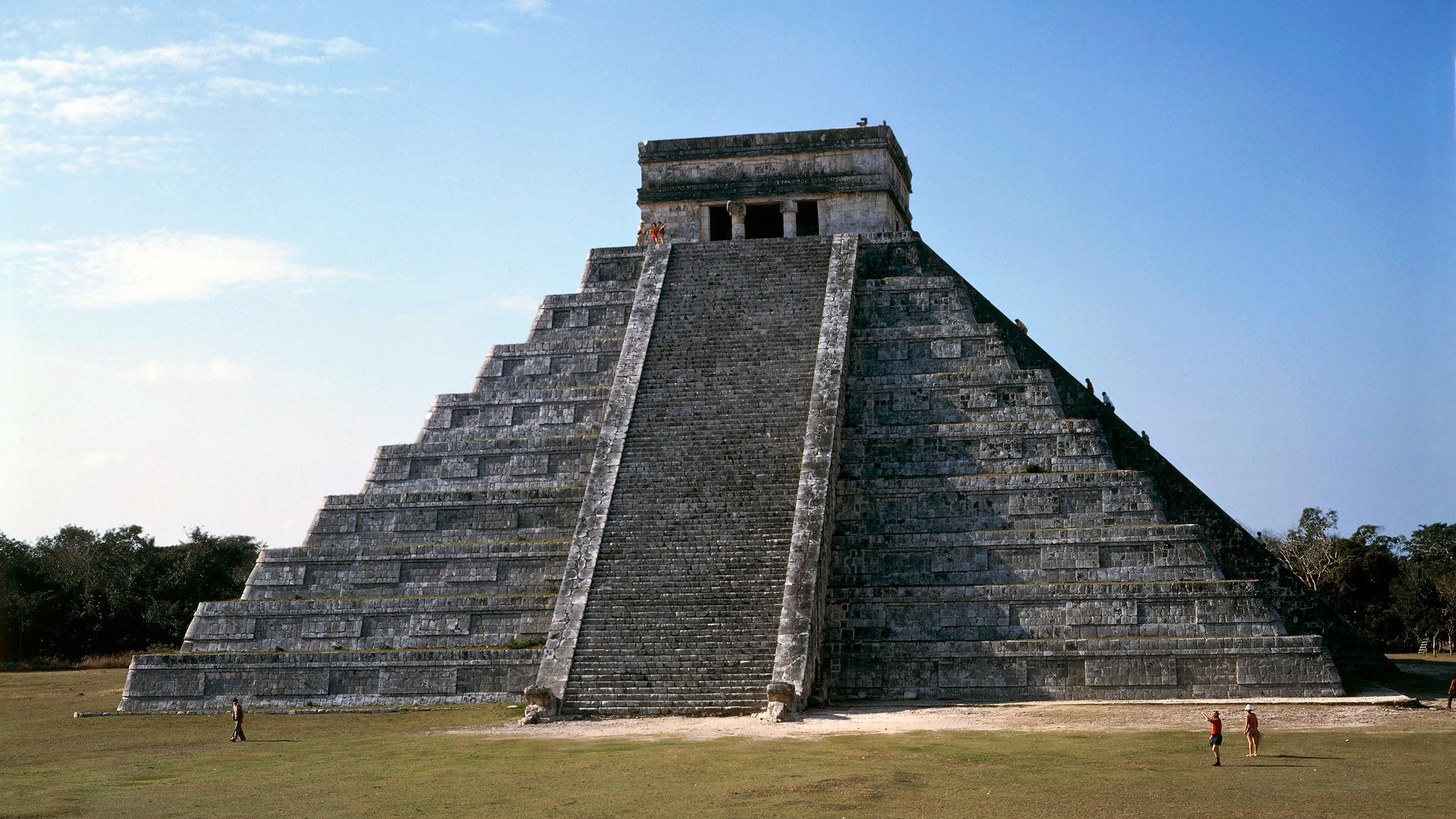
1.3 Mexico Civilisation
A country rich in history, tradition and culture, Mexico is made up of 31 states and one federal district. It is the third largest country in Latin America and has one of the largest populations—more than 100 million—making it the home of more Spanish speakers than any other nation in the world. Despite the political and social changes that have occurred over the centuries, evidence of past cultures and events are apparent everywhere in Mexico. Many of Mexico’s rural areas are still inhabited by indigenous people whose lifestyles are quite similar to those of their ancestors.
In addition, many pre-Columbian ruins still exist throughout Mexico, including the ancient city of Teotihuacán and the Mayan pyramids at ChichénItzá and Tulum. Reminders of the colonial past are evident in the architecture of towns like Taxco and Querétaro.
The Mayans, widely considered to be pre-Columbian America’s most brilliant civilization, thrived between approximately 250 and 900 A.D.
They developed a calendar and writing system and built cities that functioned as hubs for the surrounding farming towns. The ceremonial centre of Mayan cities featured plazas surrounded by tall temple pyramids and lower buildings called “palaces.” Religion played a central role in Mayan life, and altars were carved with significant dates, histories and elaborate human and divine figures. The Mayan civilization collapsed in the early 10th century, likely due to overpopulation and the resultant damage to the ecological balance.
Mesoamerican History: A Captivating Guide to Four Ancient Civilizations that Existed in Mexico - The Olmec, Zapotec, Maya and Aztec Civilization.
1400 BC - The Olmec civilization begins to develop.
1000 BC - The Mayan Civilization starts to form.
100 BC- The Mayans build the first pyramids
1000 AD- The southern cities of the Mayan culture begin to collapse.
1200 AD - The Aztecs arrive in the Valley of Mexico.
1325 AD - The Aztecs found the city of Tenochtitlan.
1440 AD- Montezuma I became leader of the Aztecs and expanded the Aztec Empire.
1517 AD - Spanish explorer Hernandez de Cordoba explores the shores of southern Mexico
Olmec Culture
The Olmec diet initially included foods from fishing and hunting. Maize and other crops were a later addition to their foodstuffs. The Olmec created massive monuments, including colossal stone heads, thrones, stela (upright slabs), and statues. They may have been the originators of the Mesoamerican ball game, a ceremonial team sport played throughout the region for centuries. They also built earthen mounds and pyramids, and ceramics of several types that became common throughout a broad region influenced by the Olmec civilization.
The Olmec Civilization was one of the most influential ancient civilizations of the early Americas, and though its dominance of the region faded in the last centuries before the Common Era.
Olmec civilization is commonly thought to be the “mother culture” of many other cultures that appeared in the region in later years. These cultures, such as the Maya, Zapotec, Totonac, and Teotihuacán civilizations have unique art, architecture, and cultures that separate them from each other, but many historians trace all of these cultures back to their shared Olmec heritage.
Zapotec Civilisation
The Zapotecs, known as the 'Cloud People', dwelt in the southern highlands of central Mesoamerica, specifically, in the Valley of Oaxaca, which they inhabited from the late Preclassic period to the end of the Classic period (500 BCE - 900 CE). Their capital was first at Monte Albán and then at Mitla, they dominated the southern highlands, spoke a variation of the Oto-Zapotecan language, and profited from trade and cultural links with the Olmec, Teotihuacan and Maya civilizations.
Maya Civilisation
The Maya civilization developed in the Maya Region, an area that today comprises southeastern Mexico, all of Guatemala and Belize, and the western portions of Honduras and El Salvador.
The Mayans, widely considered to be pre-Columbian America’s most brilliant civilization, thrived between approximately 250 and 900 A.D. They developed a calendar and writing system and built cities that functioned as hubs for the surrounding farming towns. The ceremonial centre of Mayan cities featured plazas surrounded by tall temple pyramids and lower buildings called “palaces.” Religion played a central role in Mayan life, and altars were carved with significant dates, histories and elaborate human and divine figures. The Mayan civilization collapsed in the early 10th century, likely due to overpopulation and the resultant damage to the ecological balance.
Aztecs Civilisation
The Aztecs, who probably originated as a nomadic tribe in northern Mexico, arrived in Mesoamerica around the beginning of the 13th century. From their magnificent capital city, Tenochtitlan, the Aztecs emerged as the dominant force in central Mexico, developing an intricate social, political, religious and commercial organisation that brought many of the region’s city-states under their control by the 15th century.
Invaders led by the Spanish conquistador Hernán Cortés overthrew the Aztec Empire by force and captured Tenochtitlan in 1521, bringing an end to Mesoamerica’s last great native civilization.
https://www.youtube.com/watch?v=SVA_bdmthrs
https://www.youtube.com/watch?v=ag7fpMIfJYA
